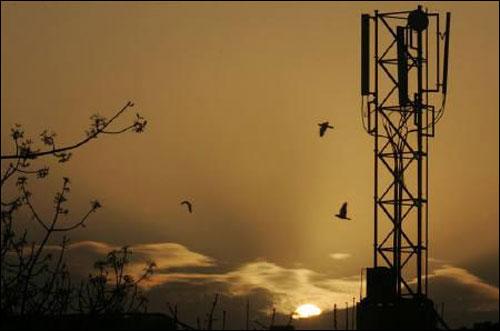
Year 2012 was a turbulent one for the telecom sector. The Supreme Court's cancelling 122 licences, failed spectrum auctions, lower user additions, disputes over Interconnect charges, one-time fee for incumbent operators... the industry has witnessed it all.
As telcos gear up to improve profitability, get ready to pay more for your mobile bills next year. Voice calls are set to be dearer in the first half in 2013.
The existing rates are not sustainable for telecom operators and telcos are working out ways to increase profitability, including a rise in voice calls. Analysts expect a 20-30 per cent rise in voice call rates in the short term. Companies, though, are doubtful if such a rise is enough to reduce the gap between the headline and realised tariffs.
While the current average headline cost is around 1.2 paise to 1.5 paise per second for voice calls, the realised rate is just about 35 paise per minute (about 0.58 paisa per second).
"Quantifying the expected rise in rates would be difficult. But tariffs for voice calls should rise to reduce the gap between headline tariff and actual realisation to ensure sustainable profitability," says Sanjay Kapoor, CEO (India and south Asia), Bharti Airtel.
New frontiers
As metros are more or less saturated, telcos may be forced to look at smaller cities for growth. "Considering the teledensity, growth prospect is very limited in the metro circles," says Ankita Somani, telecom analyst, Angel Broking. "So, a tariff hike is the only way out," she says, adding that it is likely to happen in a phased manner.
Kapoor feels that there is still enough scope for growth in the metro circles, as these cities are spreading geographically, coupled with immigrants from other parts of the country. This will be backed by the fact that there will be more shift to mobile from fixed line, even for household usage.
"Going forward, operators would be more responsible in order to maintain profitability. This would ensure better service. Thus, aggression among the long-term players would continue," says Kapoor.
He adds that there could be three broad trends in 2013: there will be a renewed focus on profitability; 3G and data services will see traction; and the smart phone ecosystem will pick up.
Experts say 2013 will be a year of data, which currently accounts for just about 15 per cent of companies' overall revenue. "Now is the time for companies to boost revenue through data. Local language content is an area almost untapped so far and more than 90 per cent of the market is still dominated by voice in India," says Hemant Joshi, partner at Deloitte Haskins & Sells.
A recent study by Gartner said mobile handset sales in India are expected to reach 251 million units in 2013, a 13.5 per cent rise over 2012. There are about 70 million active data users at present, according to industry estimates.
The industry is set to see a few new operators in the long-term evolution (LTE) 4G services during 2013. Reliance Infotel, Tikona Digital Networks and Videocon Telecommunication have announced plans to launch 4G services next year, besides Bharti Airtel that has already launched 4G services in Kolkata, Bangalore and Pune. It would step into markets like Mumbai, Delhi and Chandigarh next.
"4G would take a few more years. 3G is more near-term. Over the next couple of years, 3G would drive the data business," says Kapoor.
Joshi of Deloitte said companies are not sure what would they do with 4G and who will use that.
Even for data services, companies might need to work out a competitive pricing with more players joining the race, says Somani. But the worst is over for telecom industry in India, she adds.
Given the experience that telecom companies have had with voice tariffs, it is very unlikely that there would again be an unrealistic price war in data services, says Kapoor.
3G services, which were launched in 2010, failed to gain a massive user base. Early in 2012, operators also resorted to slashing of prices by up to 70 per cent, an attempt that did not pay off. "3G investments are growing at a steady pace. Consumers are expected to use more 3G and mobile Internet services during the coming years," says Somani. Besides 3G, launch of 4G services would further boost data usage, she adds.
Regulation blues
There are still a lot of uncertainties in terms of regulatory framework. "Telecom can be the enabler of the economy. The government should also consider the interest of the operators, and should not take the industry as a golden goose," says Joshi.
"Every stakeholder of the industry is seeking clarity over policy," says Kapoor. With clarity in merger and acquisition rules, further consolidation is bound to happen. "There would be seven or eight players, post consolidation. This will keep the competition at realistic levels," says Kapoor.
According to Rajan S Mathews, director-general of Cellular Operators Association of India, industry growth in the new year will depend to a great extent on the government's providing spectrum at affordable prices. The other factors which will fuel growth in 2013 include "true market oriented prices, increased access to services owing to launch of newer telecom technologies like BWA (broadband wireless access) and LTE (long term evolution), better devices and changing consumer behaviour".